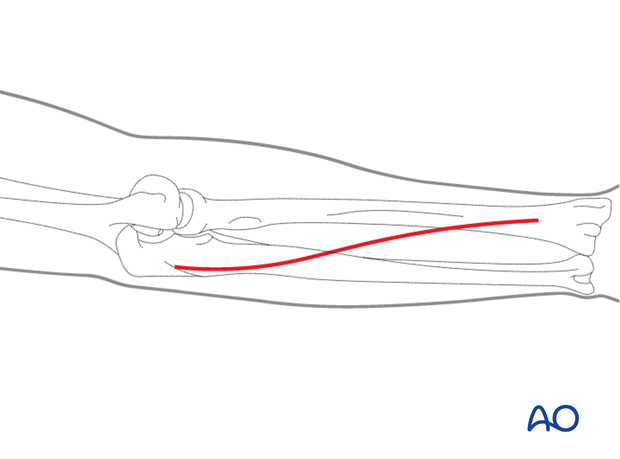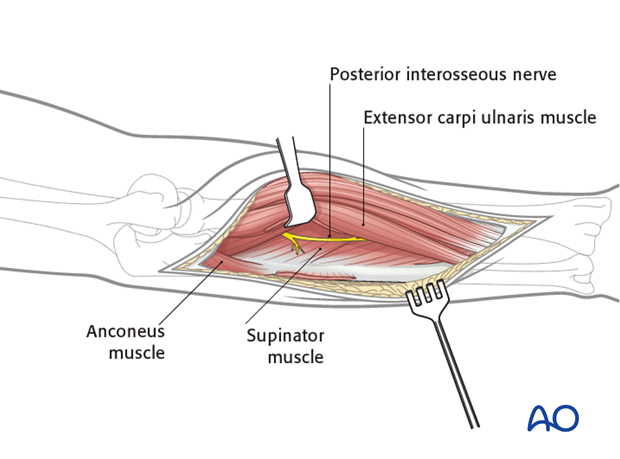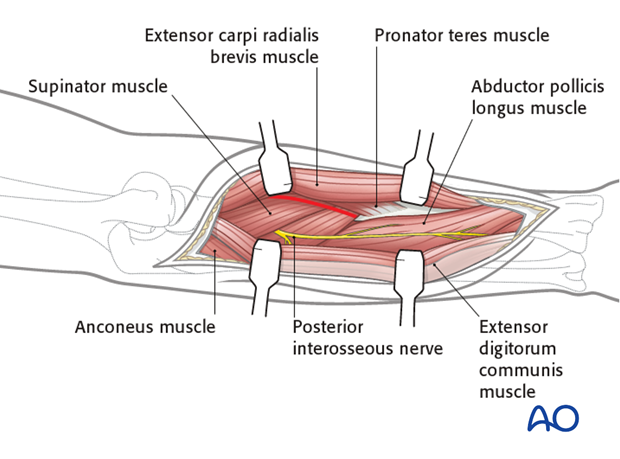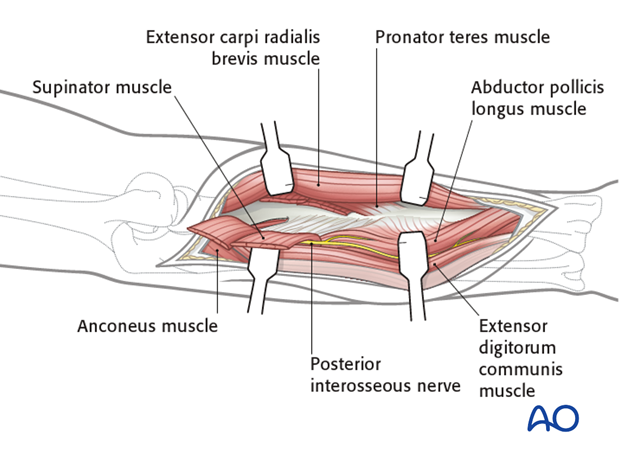Combined posterior approach to radius and ulna
1. General considerations
The proximal third of the shaft of the ulna and the proximal two thirds of the shaft of the radius can be reached by using a single incision. This approach is very unusual, and it is rarely used, only perhaps, in patients with large dorsal soft-tissue wounds.
Pitfall: The main drawback of this combined approach is an increased risk of synostosis.
2. Skin incision
With the forearm in mid-pronation, make a skin incision starting proximally between the olecranon and the lateral epicondyle, and curving distally over the proximal third of the ulna and over the middle third of the radius.

3. Dissection
Deepen the proximal half of the incision to expose the subcutaneous and adjacent radial surfaces of the ulna, retracting the extensor carpi ulnaris laterally, elevating it from the bone extraperiosteally.

4. Dissection of the radius
Expose the proximal two thirds of the radius shaft by splitting the seam between the extensor carpi radialis brevis and the extensor digitorum communis. By this maneuver the supinator muscle is exposed. Identify the posterior interosseous nerve within this muscle.

5. Retraction of supinator muscle
After identification of the posterior interosseous nerve, longitudinally divide the insertion of the supinator muscle into the lateral aspect of the radius, and retract it medially, together with the extrinsic muscles of the thumb.













